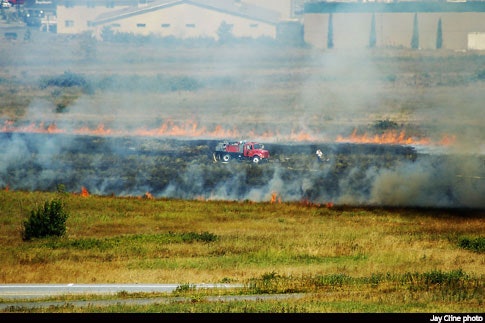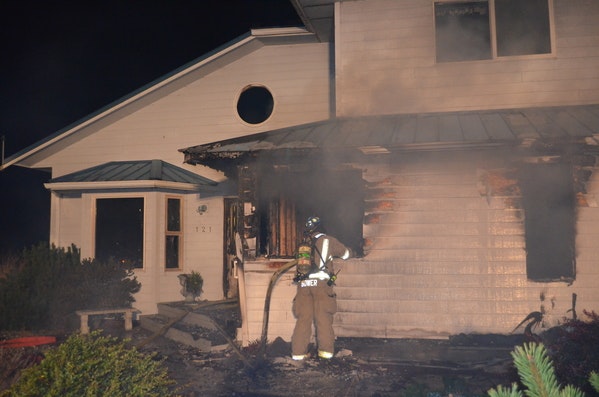Fire Suppression

Fire Suppression: District Firefighters respond to a wide range of fire incidents, including: residential structure fires, commercial structure fires, vehicle fires, brush fires, rubbish fires, electrical shorts, etc. To accomplish this, the District operates using the following combination of fire suppression vehicles:

- Engines: Apparatus designed to pump the water used to extinguish fires. They are typically equipped with a 500 – 750 gallon water tank, 1,000 – 1,500 GPM water pump, hose, ladders, and various types of task specific tools.
- Tenders: Apparatus designed to transport water to the scene. They are typically equipped with a 250 – 750 GPM pump, 2,400 – 3,500 gallon water tank, a portable dump tank, and various tools.
- Ladder: Apparatus designed for rescue, fire extinguishment, and support. They are typically equipped with a water pump, additional ladders, specialized forcible entry tools, and power saws used to cut holes in roofs for ventilation.

Wildfire Suppression: District Firefighters are trained and equipped to suppress fires involving natural vegetation. This includes responding to grass and brush fires within district boundaries; providing both first-response and mutual-aid for wildfires within neighboring US Forest Service boundaries; mobilization crews for wildfires throughout the State. The District operates three Brush Engines, which are designed to go off road and equipped with a small water tank, a fire pump, hose and an assortment of specialized hand tools for digging a fire line.
Fire Investigation: A team of District members are specially trained as fire investigators and are responsible for determining the origin and cause of fires that occur within district boundaries.They are specifically trained in the process of determining a fire’s origin and cause, photographing and documenting the scene, collecting evidence, conducting interviews, writing reports, and providing courtroom testimony.
